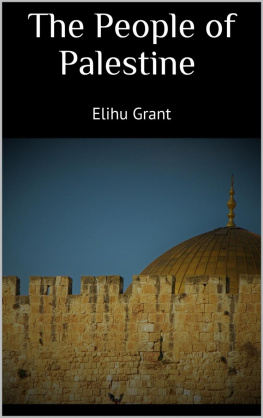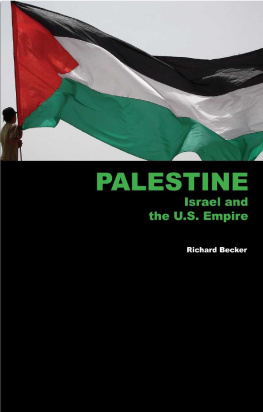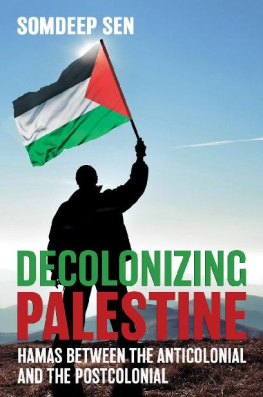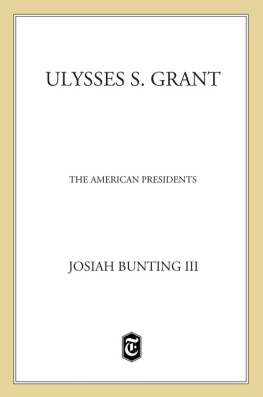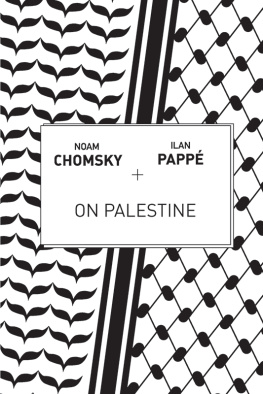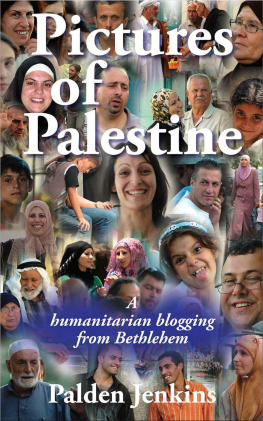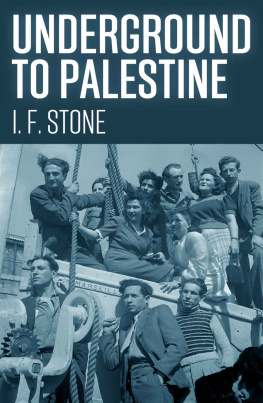Elihu Grant - The People of Palestine
Here you can read online Elihu Grant - The People of Palestine full text of the book (entire story) in english for free. Download pdf and epub, get meaning, cover and reviews about this ebook. year: 2021, publisher: Creative Media Partners, LLC, genre: Romance novel. Description of the work, (preface) as well as reviews are available. Best literature library LitArk.com created for fans of good reading and offers a wide selection of genres:
Romance novel
Science fiction
Adventure
Detective
Science
History
Home and family
Prose
Art
Politics
Computer
Non-fiction
Religion
Business
Children
Humor
Choose a favorite category and find really read worthwhile books. Enjoy immersion in the world of imagination, feel the emotions of the characters or learn something new for yourself, make an fascinating discovery.
- Book:The People of Palestine
- Author:
- Publisher:Creative Media Partners, LLC
- Genre:
- Year:2021
- Rating:4 / 5
- Favourites:Add to favourites
- Your mark:
- 80
- 1
- 2
- 3
- 4
- 5
The People of Palestine: summary, description and annotation
We offer to read an annotation, description, summary or preface (depends on what the author of the book "The People of Palestine" wrote himself). If you haven't found the necessary information about the book — write in the comments, we will try to find it.
The People of Palestine — read online for free the complete book (whole text) full work
Below is the text of the book, divided by pages. System saving the place of the last page read, allows you to conveniently read the book "The People of Palestine" online for free, without having to search again every time where you left off. Put a bookmark, and you can go to the page where you finished reading at any time.
Font size:
Interval:
Bookmark:
OF PALESTINE
| r | gh | y | |
| b | z | f | a |
| t | s | u | |
| th | sh | k | i |
| j | l | ||
| m | |||
| kh | n | ||
| d | h or | h | |
| dh | w |
| Chapter I | |
| Introductory. Remarks on the country of Western Palestine: historical, topographical and geological; distances, levels, rock composition, hills, valleys, caves, soil, etc. The waters: rivers, lakes, the watershed, the Shephelah, ponds, springs, cisterns, reservoirs and pools. The seasons: wet and dry, the rainfall, sun, drought, the weather according to the months, effect on health and on food supply, harvest. The winds. Flora: trees and flowers. Fauna: wild animals, birds. Scenery: appearance of cities and villages in Palestine. Sites, buildings, gardens, roads, paths, wilderness, agricultural matters, ripening fruit, vineyards, care of the soil, walls, watch-towers, terraces, orchards, olives, figs, pomegranates, etc. | Page . |
| Chapter II | |
| General characteristics of the population of Palestine. The Bedawn or nomads. The village and its people. Moslems and Christians: their distribution, their mutual relations. Description of the peasant man and the peasant woman. | Page . |
| Chapter III | |
| Village Life. Introductory. The tribe: how constituted, its fellowship and significance. The family within the tribe. Importance of a strong family. Marriage in family and tribe: marriage settlement, qualities of a good wife, customs and ceremonies preliminary to marriage, wedding festivities and the celebration. The status of the new wife. An anomalous state of affairs. A disappointed lover. Children: boyhood and girlhood, importance of sons, birth, announcing the newly-born, naming the child. The midwife, care of babies, attention to children in health and in sickness, clothing, growing up, play, amusements and work, training. Family and personal names. | Page . |
| Chapter IV | |
| Village Life. The houses of the peasants: structure, arrangement, conveniences, utensils and furnishings. Foods: their preparation and storing, eating customs. Costumes; male attire, female attire. Household industry: division of labor between members, womens work, house, oven, field and wilderness. Health data: poverty and superstition as foes to health, treatment of the sick, common ailments, diseases, hospitals and medical assistance. The dumb and the blind. Treatment of the insane, the leprous. Death, mourning, burial, graves. The cholera and its ravages in Palestine in 1902, attendant evils, famine and quarantines. | Page . |
| Chapter V | |
| Village Life. Religion. The religious basis of the peasant life. Country shrines venerated by the peasantry, saints, tombs, lamps, ruined churches, mosks, reverence for patriarchs and prophets, sacred trees. Superstitions concerning localities, minor superstitions, hair, doorways, food, evil eye. Prayer of women. Fatalism. Moslem prayer. Neby Ms procession. Raman, Bairam. Eastern and Western Churches, organization, priesthood. Fasts, feasts, proselyting. The Samaritans and their Passover. | Page . |
| Chapter VI | |
| Village Life. Business. The Palestine peasant as a worker. Farming the first business of the village. The transition from the life of the nomad to the life of the peasant. Fellan. Land holdings and titles. Farming rights. Crops and sowing, work animals and their management, care of the standing crops, tares, mists, simultaneous reapings, harvest-time, threshing and cleaning. Grape season, vineyard districts, use of the fruit, raisins, export trade in raisins, care of vineyards, watch-towers in vineyards and orchards. The olive crop and its care. Flocks of sheep and goats, the young, varieties, the shepherd. The wool business and kindred industries, spinning and weaving. Undeveloped agricultural possibilities. The village market, shops, stores, bargaining and trade customs, measures and weights, currency, accounts, money-lending, village crier, the go-between, the shaykhs in business capacity. Transport and travel in the country, roads and vehicles. Stone and building trades, the materials and the tools. Miscellaneous trades, peasants in the city for business or for hire, dealers in antiquities and their ways. |
Font size:
Interval:
Bookmark:
Similar books «The People of Palestine»
Look at similar books to The People of Palestine. We have selected literature similar in name and meaning in the hope of providing readers with more options to find new, interesting, not yet read works.
Discussion, reviews of the book The People of Palestine and just readers' own opinions. Leave your comments, write what you think about the work, its meaning or the main characters. Specify what exactly you liked and what you didn't like, and why you think so.

